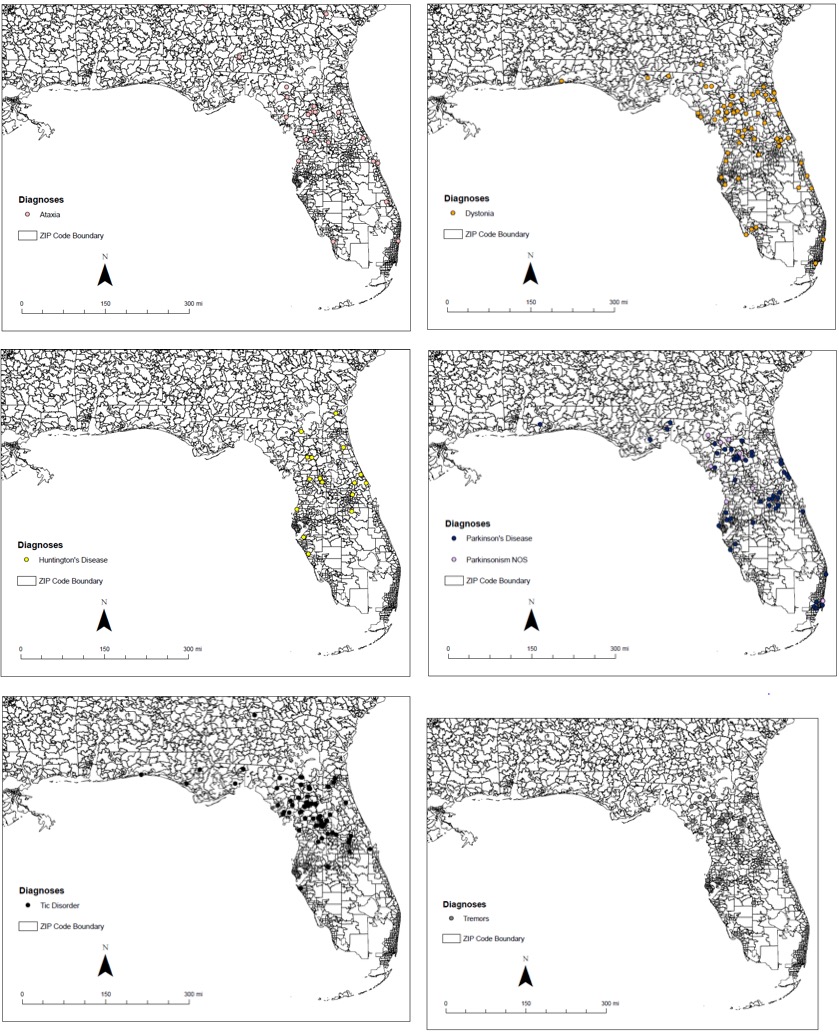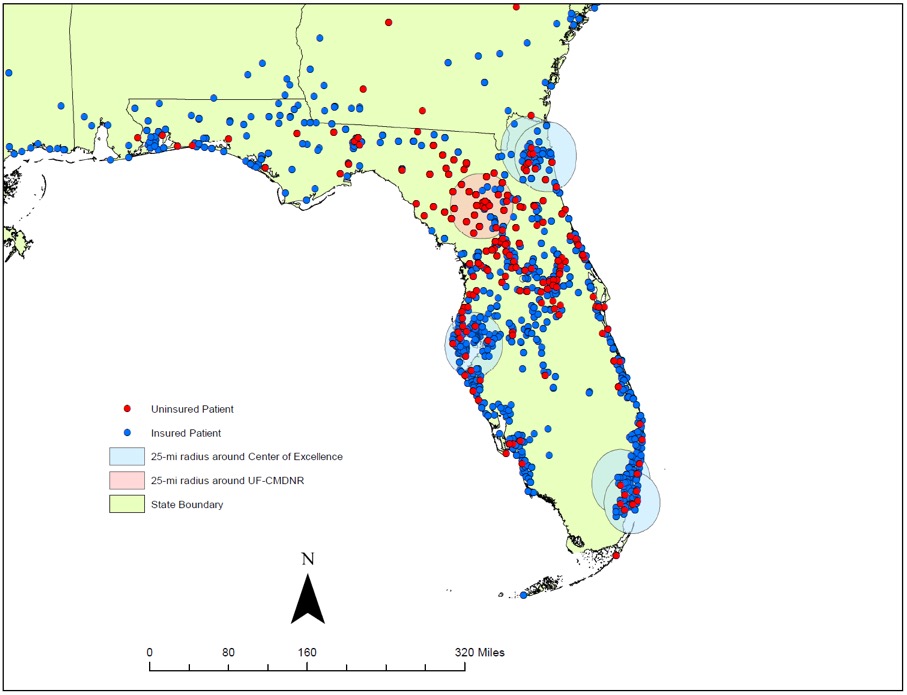Session Information
Date: Sunday, October 7, 2018
Session Title: Epidemiology
Session Time: 1:45pm-3:15pm
Location: Hall 3FG
Objective: To explore geographical and clinic-demographical profile of underserved patients in Florida diagnosed with movement disorders.
Background: Movement disorders are complex conditions that often require a higher level of outpatient management. This demand might be particularly higher in underserved populations. Underserved patients may seek care beyond the typical catchment area due to several unclear factors contributing to their access decisions.
Methods: A retrospective study was performed at the Fixel Center and the UF Program for Movement Disorders and Neurorestoration (UF-PMDNR). Age, gender, diagnosis, ZIP code, and type of treatment were collected. Movement disorders centers (MDC) across Florida were identified and distances between each patient and the nearest MDC as well as the UF-PMDNR were calculated. ArcGIS 10.3 and R statistical package (R Core Team, Vienna, Austria) were used for the analysis, with p=0.05 used for statistical significance.
Results: A total of 6867 patients were identified. Of these, 355 were Medicaid/self-pay (underserved). The most common diagnoses were tics (19.2%), dystonia (18.3%) and Parkinson’s disease (14.3%). Over a third of patients received rehabilitation services, 11% received botulinum toxin injections, and 6% received deep brain stimulation. Patients with ataxia, dystonia, Huntington’s disease, Parkinson’s disease, tics and non-essential tremors travel significantly longer distances to receive care at UF-PMDNR when compared to the nearest MDC (p<0.05). Similarly, patients receiving botulinum toxin, deep brain stimulation, and rehabilitation services travelled longer distances to UF-PMDNR than to the nearest MDC (P<0.05).
Conclusions: Underserved patients travelled longer distances to receive care at the UF-PMDNR instead of their nearest MDC. Research opportunities, center of excellence accreditations, limited specialist availability due to lack of insurance, or need of complex management strategies are potential factors accounting for this phenomenon but plausible reasons should be explored further in future studies. Notwithstanding, these results raise awareness of the need of additional comprehensive multidisciplinary movement disorders centers to better serve not only movement disorders patients, but particularly underserved patients who have difficulties with healthcare access.
To cite this abstract in AMA style:
A. Giacobbe, E. Dinh, O. Nguyen, A. Ramirez-Zamora, M. Okun, L. Almeida. Underserved Patient Access to Movement Disorders Care: Experience from a Tertiary Academic Referral Center [abstract]. Mov Disord. 2018; 33 (suppl 2). https://www.mdsabstracts.org/abstract/underserved-patient-access-to-movement-disorders-care-experience-from-a-tertiary-academic-referral-center/. Accessed December 19, 2025.« Back to 2018 International Congress
MDS Abstracts - https://www.mdsabstracts.org/abstract/underserved-patient-access-to-movement-disorders-care-experience-from-a-tertiary-academic-referral-center/


